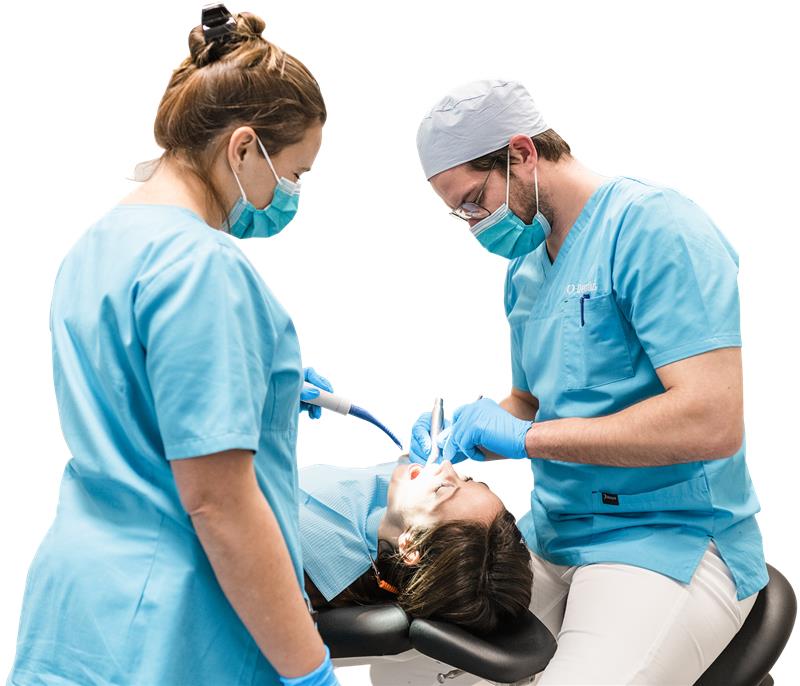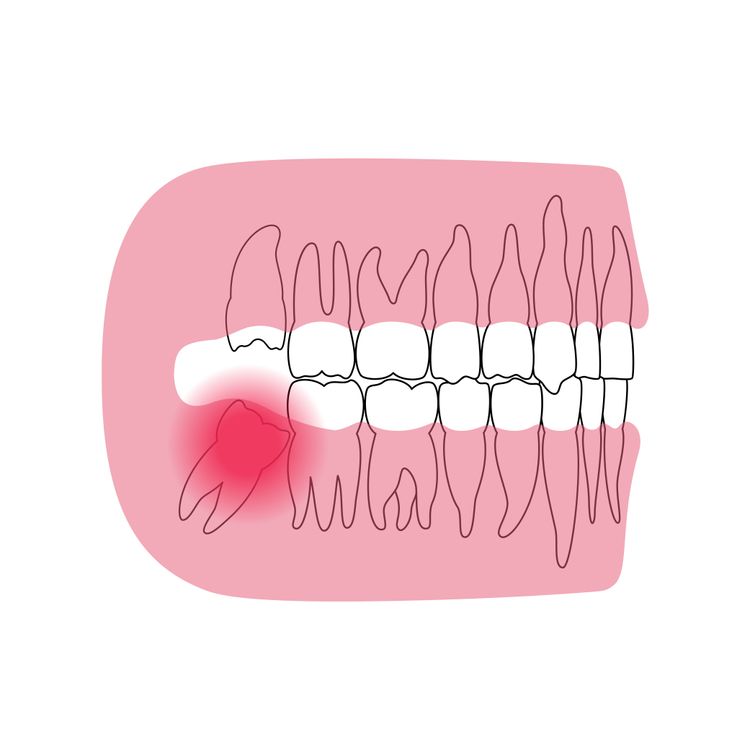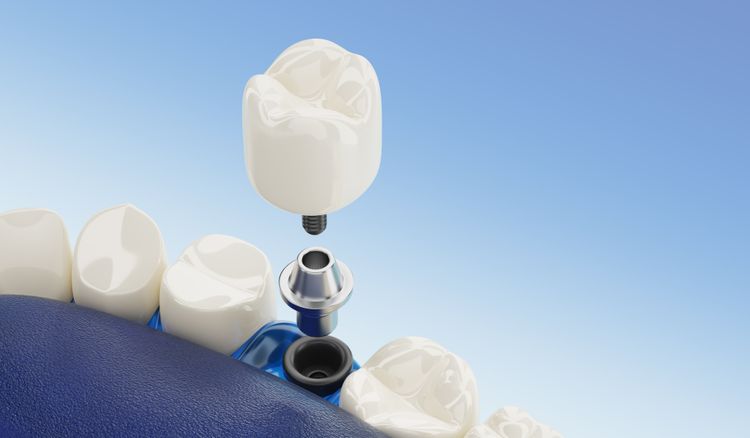
Stomatology
Orthognathic surgery
Sometimes, the proportions of the upper and/or lower jaw and chin are so different that orthodontics alone will not be enough to achieve a stable and beautiful end result.
In these situations, the orthodontist will propose an additional jaw correction in cooperation with the oral surgeon.
In this treatment plan, the orthodontist will start by aligning the teeth so that they are nicely in position, after which the surgeon will position the jaws correctly. The finishing touch that will ensure that the teeth and the bite will fit together nicely is then done by the orthodontist again.
This planning is always done in consultation with the patient and according to age and gender.
These treatments are largely reimbursed by the health insurance and are often performed in Belgium under full anaesthetic and in the mouth so that there are no external scars.
Post-operative cooling
In the first days after jaw surgery, it is not the pain but the swelling that bothers the patient the most. Some swelling is inevitable, but in order to keep this to a minimum, post-operative cooling is used, among other things.
Recently, an advanced cooling system came on the market, which can be rented for home use through your health insurance. After the operation, a specially developed mask is placed on the face. This mask provides continuous, even cooling of the face. With this system, post-operative swelling can be prevented much better than with classic ice-cooling.
Recently, an advanced cooling system came on the market, which can be rented for home use through your health insurance. After the operation, a specially developed mask is placed on the face. This mask provides continuous, even cooling of the face. With this system, post-operative swelling can be prevented much better than with classic ice-cooling.
You can obtain more information from your doctor.
Extraction of wisdom teeth
What is an extraction?
Extraction is the removal of a tooth. Occasionally, a tooth will have to be removed if it has a very deep caries, if it is broken, or if it is interfering with the other teeth due to its erosive position.
Most teeth can be removed by the general dentist. Very occasionally, the dentist will refer to a stomatologist or oral surgeon to remove teeth.
This is often the case with wisdom teeth.

Why remove a wisdom tooth?
The wisdom tooth is the last tooth in the dentition to break through and is usually superfluous, often causing additional problems.
Lack of space often causes problems when wisdom teeth are erupting. Simple wisdom teeth, which are often largely erupted, are removed in the practice itself.
When wisdom teeth are stuck under the gums and are difficult to remove, the patient is referred. This can be done internally or externally, depending on the degree of difficulty and the availability of specialists in the practice. The specialist can then remove the teeth under local anaesthetic in the practice or under general anaesthetic in the day clinic. Of course, this will be discussed in detail with the patient and the advantages and disadvantages of both procedures will be explained.
To remove a tooth, it will first be properly anaesthetised so that you do not experience any pain. On the day of the operation, you may not eat or drink anything that is hot or cold.
If you feel any discomfort, you may take a Dafalgan or paracetamol type painkiller, but not aspirin, as this can make the blood clotting and the healing process more difficult and delayed.
After the operation you are also advised not to rinse, as this could cause a haemorrhage. The cavity in the bone will close spontaneously, but this can take a few weeks to months.
Patients who have a tooth removed in our practices receive a list of advice concerning painkillers and aftercare afterwards, both orally and in writing.
Placement of implants
When teeth are lost, they can be replaced. Implants are often used here. These are artificial roots that are placed in the jawbone. However, there are a number of conditions: good oral hygiene, good general health and sufficient remaining bone. In order to assess the latter, a 3D scan is often taken prior to the placement.

Assistance in case of accident
In an accident where the teeth have been hit, it is important to intervene as quickly and accurately as possible.
In most cases, the damage is limited and can be solved by touching up with white filling.
Nevertheless, it is important to react quickly and consult a dentist. He or she will document this case so that we can follow it up correctly in the future and if necessary solve it aesthetically.
If necessary, the insurance documents will be taken care of.

Removal of cysts
What is a cyst?
A jaw cyst can occur in association with a tooth or separate from the tooth.
Cysts that are formed separately from the tooth are removed without touching the tooth.
When cysts that occur in association with a tooth are removed, the procedure is combined with a root canal treatment to remove the inflammation in the root canal as well. This is because the inflammation of the root canal extends into the cyst cavity. The root canal treatment can be carried out prior to the removal of the cyst or during the same procedure.
A cyst does not always cause immediate complaints. Some people can live with it for a long time without noticing it. Often a black spot can be seen on an X-ray photo.
How is a cyst formed?
A cyst is an inflammatory reaction that often occurs following a cavity in a tooth. Bacteria can enter through the hole and cause an inflammation. When the cyst is not at the base of the tooth, the cyst may be caused by bacteria entering through wounds, or transmitted through teeth.
